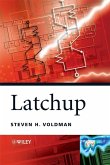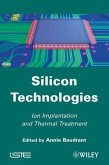Semiconductor flash memory is an indispensable component of modern electronic systems which has gained a strategic position in recent decades due to the progressive shift from computing to consumer (and particularly mobile) products as revenue drivers for Integrated Circuits (IC) companies. This book provides a comprehensive overview of the different technological approaches currently being studied to fulfill future memory requirements. Two main research paths are identified and discussed. Different "evolutionary paths" based on the use of new materials (such as silicon nanocrystals for storage nodes and high-k insulators for active dielectrics) and of new transistor structures (such as multi-gate devices) are investigated in order to extend classical floating gate technology to the 32 nm node. "Disruptive paths" based on new storage mechanisms or new technologies (such as phase-change devices, polymer or molecular cross-bar memories) are also covered in order to address 22 nm and smaller IC generations. Finally, the main factors at the origin of these phenomena are identified and analyzed, providing pointers on future research activities and developments in this area.
Dieser Download kann aus rechtlichen Gründen nur mit Rechnungsadresse in D ausgeliefert werden.









